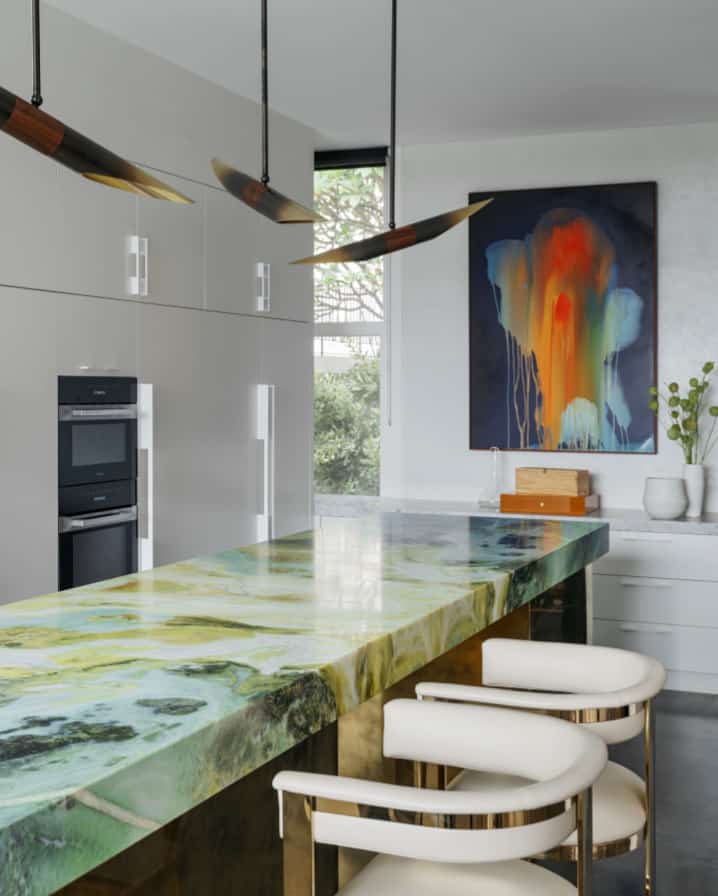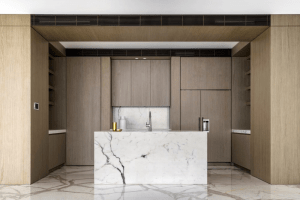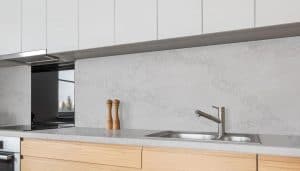Having a stone benchtop in your kitchen is simply wonderful. From the beauty of natural or engineered stone to the hardiness and durability of the material, nothing can stand up to the quality of a stone benchtop.
Both natural stone and engineered stone benchtops are made up of hard and long-lasting minerals. However, a ton of activity happens in the kitchen, there’s a lot of traffic around and past most benchtops and the benchtop itself sees a LOT of action.
So, despite your best intentions and the care and maintenance you invest into your stone benchtop, chips, cracks, stains and burns are possible, even if they’re unlikely and unfortunate.
The good news: All stone benchtops can be repaired to look and function as good as new.
The even better news: Quick, professional benchtop repairs is just a phone call away. If you need your damaged benchtop appraised or work to be done, give us a call on (02) 8585 2999.
Do you really need to repair your stone benchtop?
Even if the unsightly chip, crack or stain doesn’t bother your inner perfectionist designer, benchtop damage–especially in the kitchen–can be more than an aesthetic flaw.
Food and liquid can get into the cracks or chips causing bacteria or mould to grow, and more stainage. Even dirt and moisture can get trapped and cause more damage. All of this can be hard to clean and get worse over time.
The longer you leave damage both the worse it can get and the more difficult (and costly) it will be to repair when you eventually decide you need to do it.
Well, you ask, how exactly do you repair a stone benchtop?
Good question.
Most of the time, repairing a stone benchtop is straightforward and affordable if attended to in a timely fashion.
Cracks & Chips – Epoxy Resin
Epoxy resin, or polyepoxides for the scientifically literate, is a very strong adhesive.
Epoxy resin is used for a number of building, construction and repairing applications, including repairing damaged stone benchtops.
Colour-matched epoxy resin (or resin with specifically added colour pigments to match the stone) is used to patch chips or fill in cracks.
Once the resin hardens, the benchtop is smoothed and polished to make sure the previous damage cannot be seen still.
UV lights (often in combination with a special UV glue) and additional adhesives can also be used to help fix certain cracks or chips depending on their nature, placement and severity.
The benchtop is then sealed for a full, seamless repair job, and to help prevent further damage or staining.
If you’re attempting to fix small cracks or chips, you’ll need to ensure you clean the area with an ammonia-based cleaner and nylon brush beforehand, and dry it thoroughly before applying the epoxy resin and allowing it to set for 24 or so hours.
Can you use super glue?
Short answer: no.
Long answer: Definitely no. Super glue will not only fail to repair your benchtop, it could damage the stone further and will not hide the original damage in even a best case scenario.
Large Cracks
While rare, large and deep cracks to a stone benchtop can require a little more of a process for repairing.
If one side of the cracked benchtop has sunk or dropped, then it will need to be lifted and kept in place with a clamp while it is being repaired. Additional reinforcement and support might be provided to ensure the benchtop does not tilt again or put too much strain on the repaired crack.
If additional reinforcement is needed, the repairers will make sure it is not visible but rather contained underneath or within the benchtop (depending on your specific kitchen).
Stains & Burn Marks
Professionally supplied and installed stone benchtops all come sealed for resistance against stains from food or liquid spills. Overly acidic foods can still cause a stain if left unattended for too long.
Discolouration can also occur to stone benchtops that are not properly maintained and cared for over a long period of time. The use of harsh chemical cleaners or acidic detergents can cause more harm than good and shouldn’t be used for getting rid of stains.
Burn marks can happen to a stone table if a very hot pot or pan is placed directly on the benchtop. While unsightly and damaging, most burn marks can still be removed and the benchtop restored by a professional.
Using a combination of stain removal polish and cleaner, as well as specialist sandpaper, benchtop repairers can often remove burn marks and have your benchtop looking just about as good as new.
Large Pieces
If a piece of your stone benchtop does break off, try to find and store any of the pieces you find. Small chips can be fixed with as closely a colour-matched epoxy resin as possible, but the best way to restore large breakages or chips is by reconnecting the different pieces instead of having to source new stone that matches the benchtop you have.
DIY Or Euro Marble?
That’s an overview for how stone benchtops are repaired, but the truth is that though there are plenty of detailed DIY instructions online, the most reliable and long-lasting way to repair stone is to get the professionals to do it. ESPECIALLY if the damage is extensive or left unattended for a long time.
We’d be happy to take a close inspection of your benchtop and walk you through all of the repair options available. Just give the Euro Marble team a call today.
For more information about stone benchtops, check out our other blog articles:





